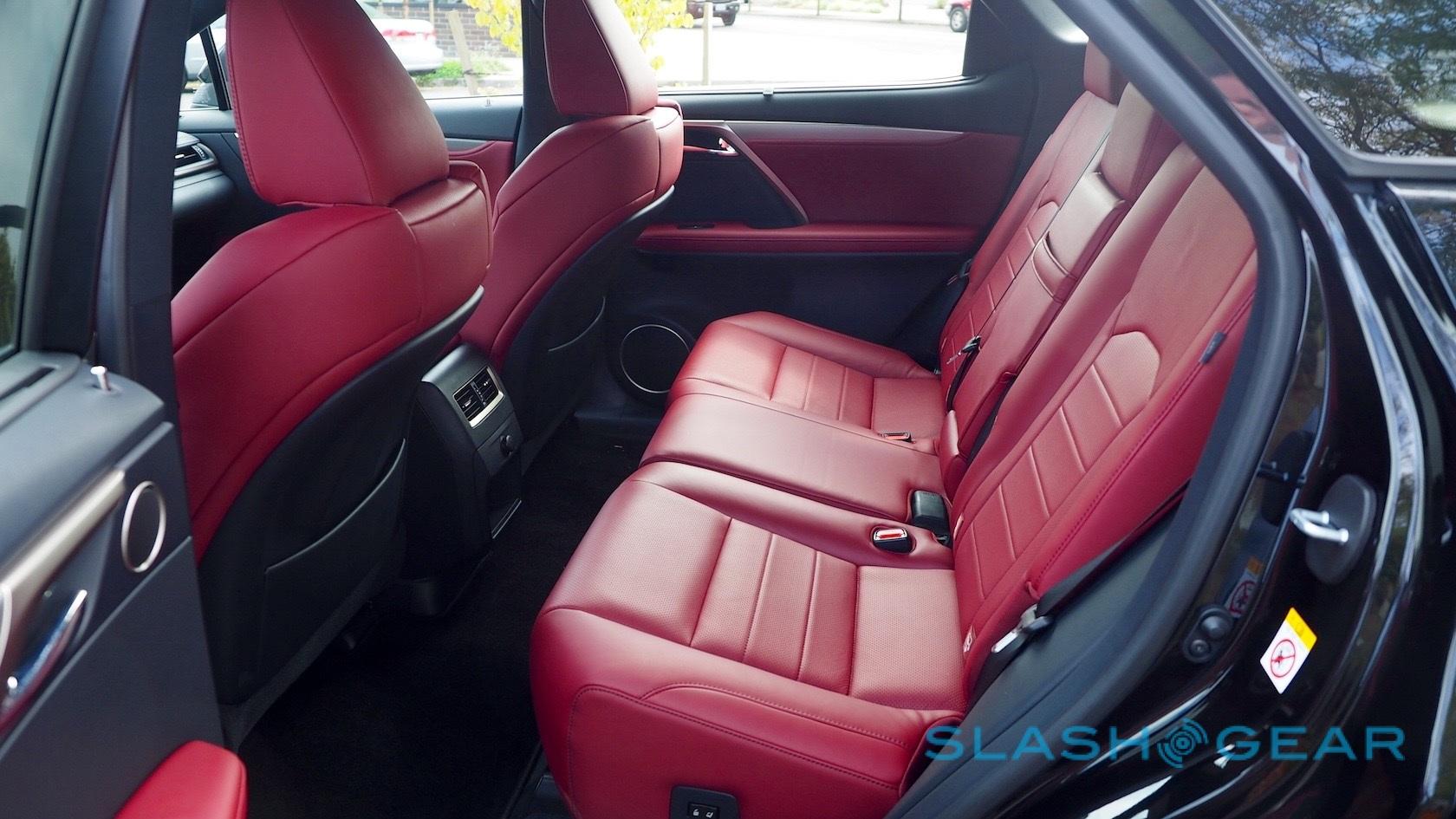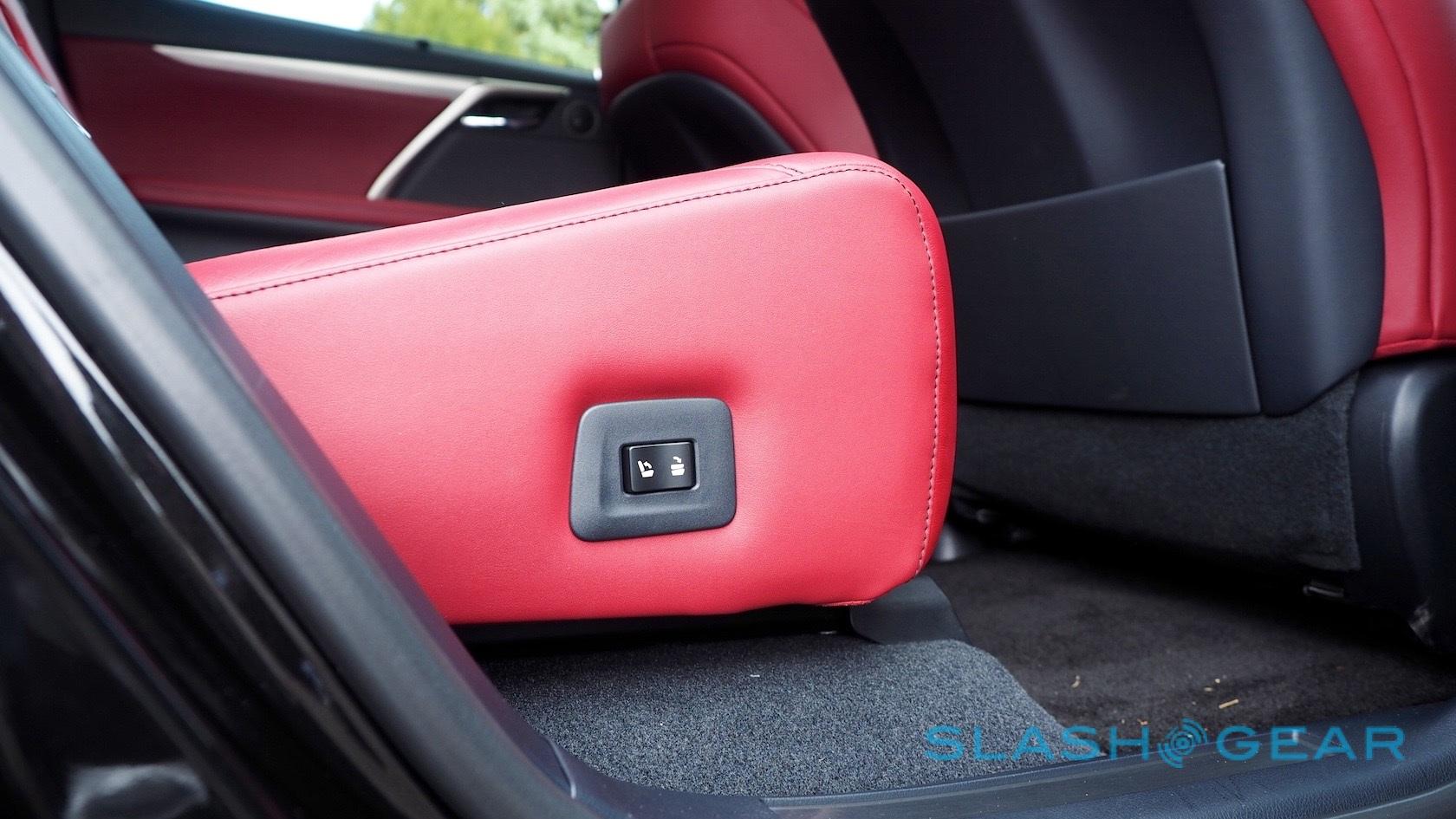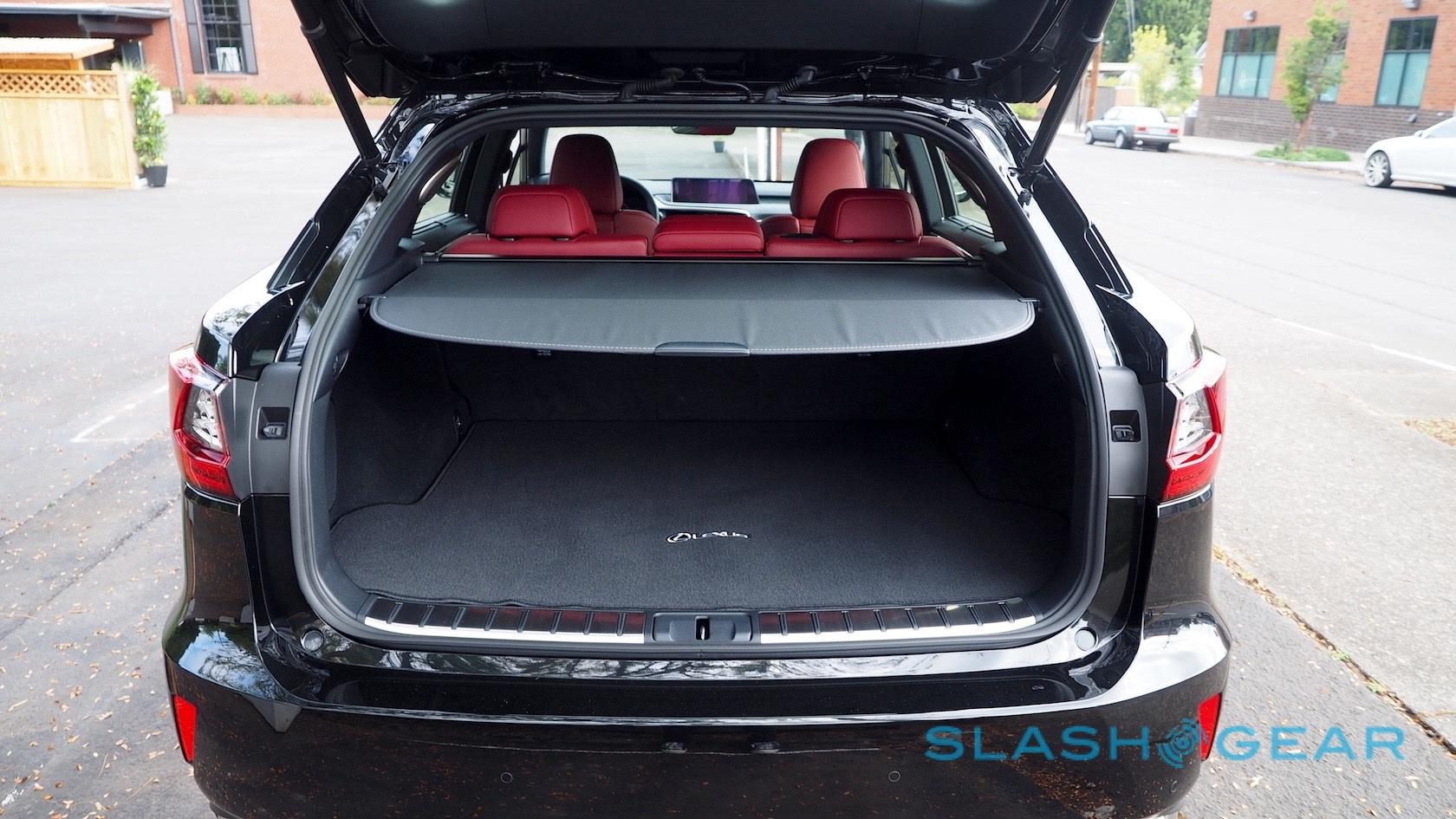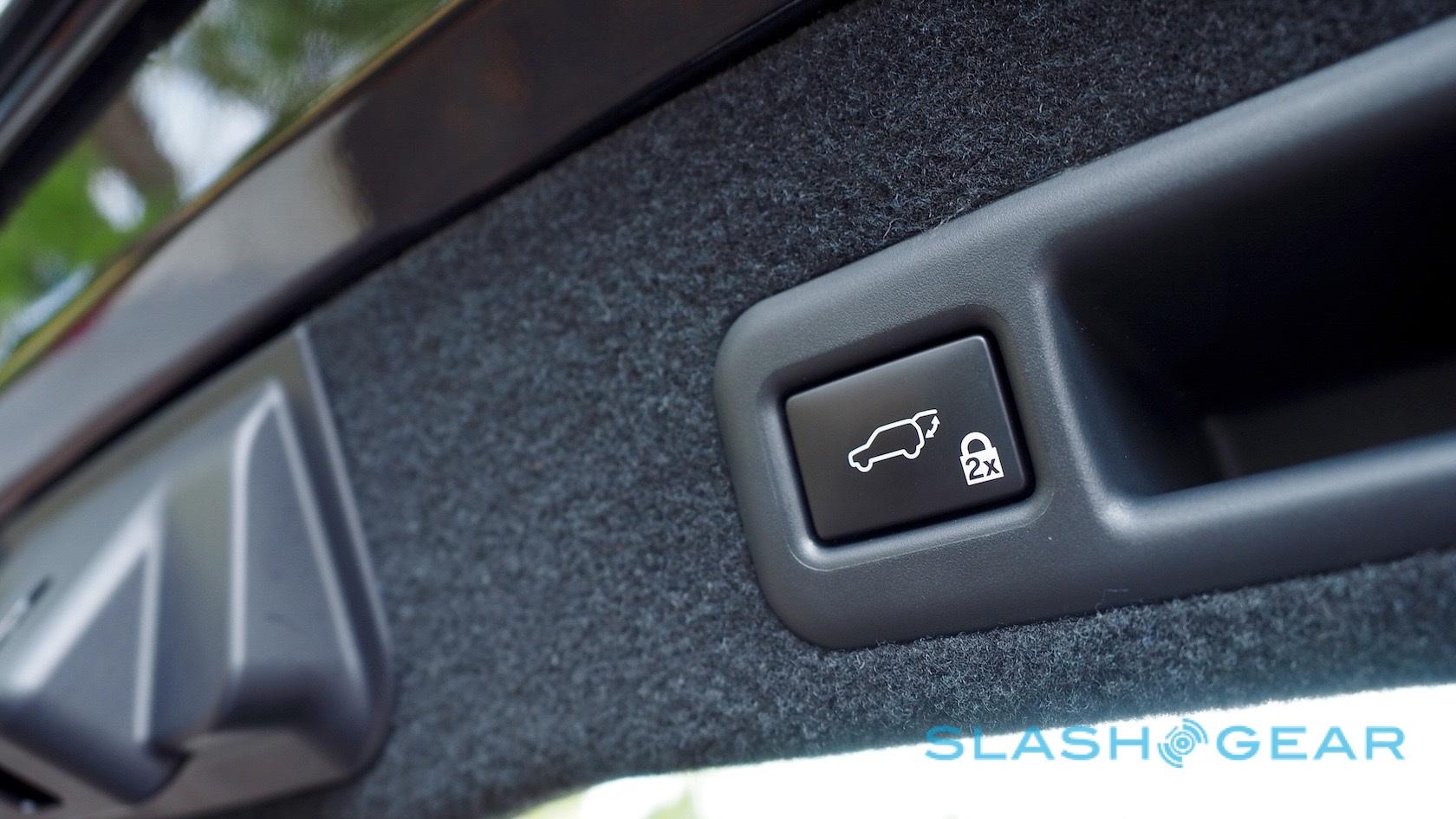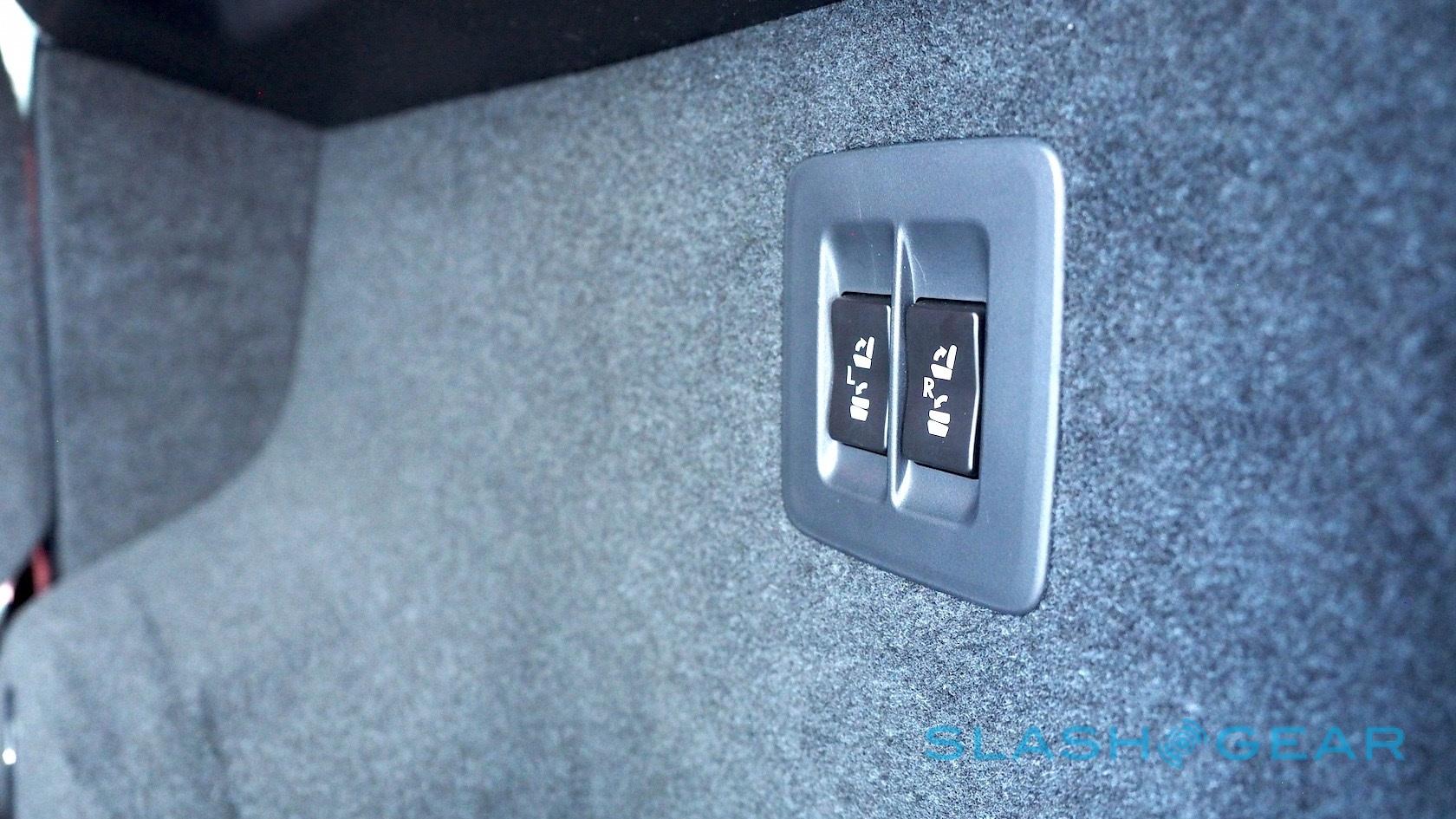2016 Lexus RX first drive - Best-seller goes bold
There's no arguing with quite how important the RX is to Lexus. The company credits it with kickstarting the "midsize luxury crossover segment" – that's fancy SUV to you and I – back in 1998, and since then over 1.2m have been sold. You could forgive Lexus for playing it safe, then, when it comes to refreshing the best-selling model in its line-up.
That could mean toning down the controversial L-Finesse design language, perhaps, which has proved divisive on the IS and NX. Some new wheels, a couple of fresh paint colors, and maybe a diluted version of the company snout would all have been the easier approach.
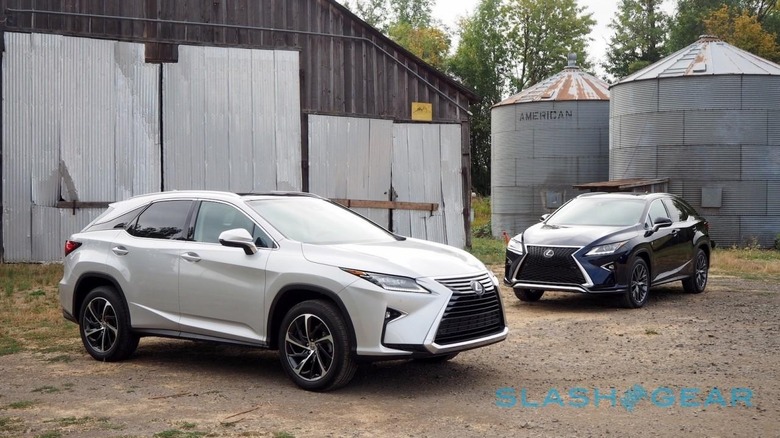
"Safe" is not a word you'd use to describe the 2016 RX aesthetic, though. The design is origami meets knife fight, all sharp creases and slashes, with a little moon buggy thrown in for good measure. At the front, the trapezoidal grille stretches down deep, sprouting oddly-angled surfaces that flare back into the triangular fog lamps and the arrowhead headlamps.
From the side, the big, squared-off arches look best with Lexus' optional 20-inch wheels, new to the car, while the floating rear pillar may not actually be a full glass section but looks damned convincing all the same.
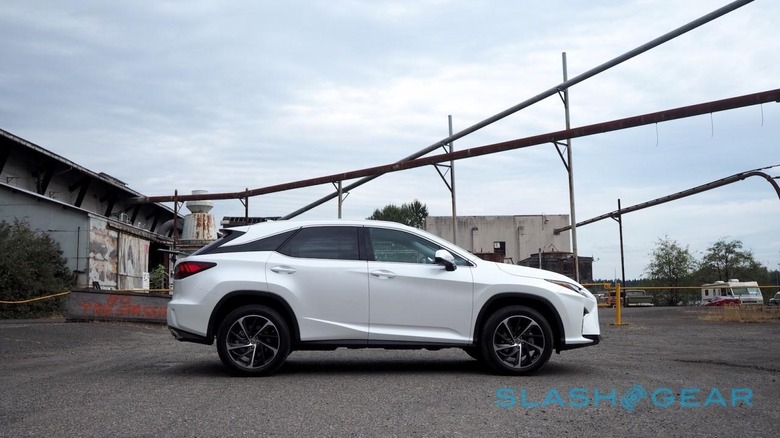
The rear gets a more pronounced version of the third-gen RX's angled glass, while the pinched taillamp clusters and silver-rimmed tailpipes look space-aged and fresh.
It works better in certain colors than in others. White is particularly eye-catching, while the dark blue also catches the light across the various surfaces neatly. The red, meanwhile, flattens things out a little, and might be a good choice if Lexus' aesthetic is a little on the risqué side for your tastes.
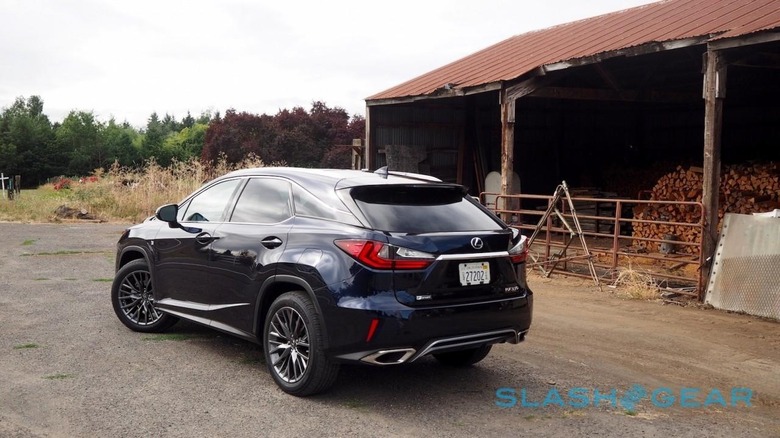
Two main models make up the range for North America, the RX350 with a 3.5-liter, V6 engine mated to an eight-speed automatic transmission, and the RX450h, which pairs the V6 with an electric drive for hybrid power.
Both will be offered in front-wheel drive (FWD) and all-wheel drive (AWD) variants, as per the current car. However, for the 2016 model Lexus will offer an F SPORT version of both the regular and the hybrid RX, though only if you opt for an AWD car.
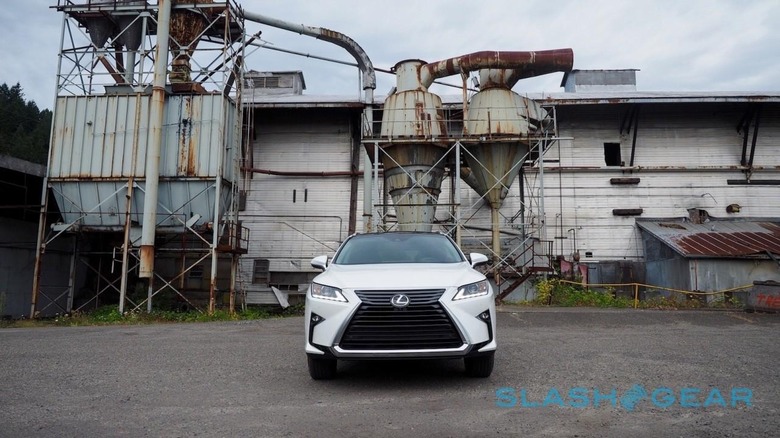
The RX350 isn't underpowered – it musters 295 HP and 267 lb-ft of torque – but in regular form it prioritizes comfortable cruising over urgency. Part of that is the relatively high 6,300 rpm at which the peak horsepower is felt (max torque comes in a little lower, at 4,700 rpm)
Lexus doesn't intend the RX to be a mud-plugger, and indeed even in the AWD car you'll spend most of your time with only the front wheels being driven. The SUV only brings the rears into play when it senses a loss of grip. That priority is down to economy: the EPA hasn't weighed in with official figures yet, but Lexus is expecting 20/28/23 mpg for the FWD, and 19/26/22 mpg for the AWD.
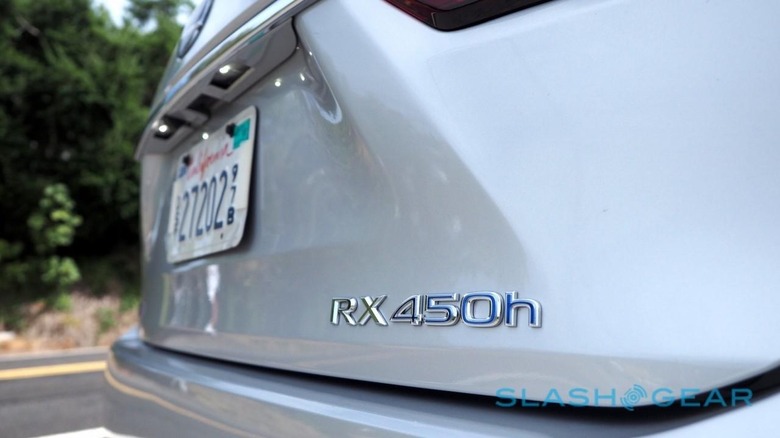
Things get more interesting in the hybrid. Lexus-parent Toyota has no small amount of history in electrification, and the RX450h benefits from it significantly: the numbers aren't massively higher – total power from gas and electric drive is 308 HP, for instance – but the difference comes in when it's delivered.
The RX450h gets the familiar electric surge of performance from the get-go, and it feels more spritely and eager as a result. Even the roughly 400 lb of extra weight the hybrid system contributes to a more planted on-road feel – Lexus keeps the Ni-MH batteries low down, helping with the center of gravity.
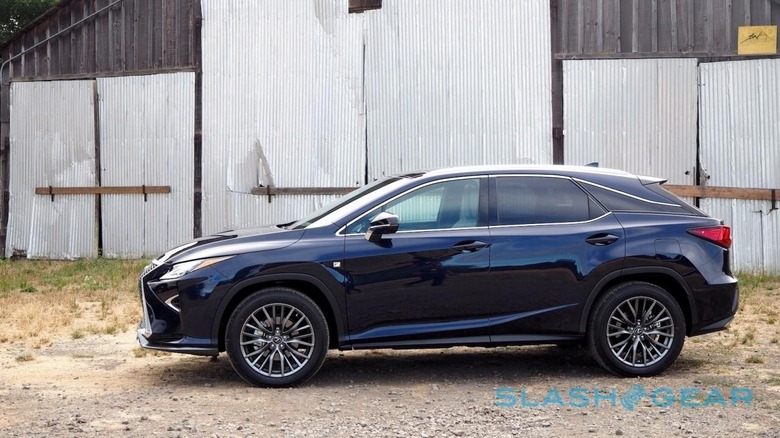
In the AWD version there's a third motor for the rear, which contributes 67 HP and can also act as a generator under braking.
Both gas and gas-electric models proved to have that Lexus near-silence, though at low speeds the all-electric mode of the hybrid was obviously quieter still. The MacPherson strut front suspension and double-wishbone rear are compliant and comfortable, smoothing over unruly road surfaces, though you can still punt the RX through the corners without boat-like body roll.
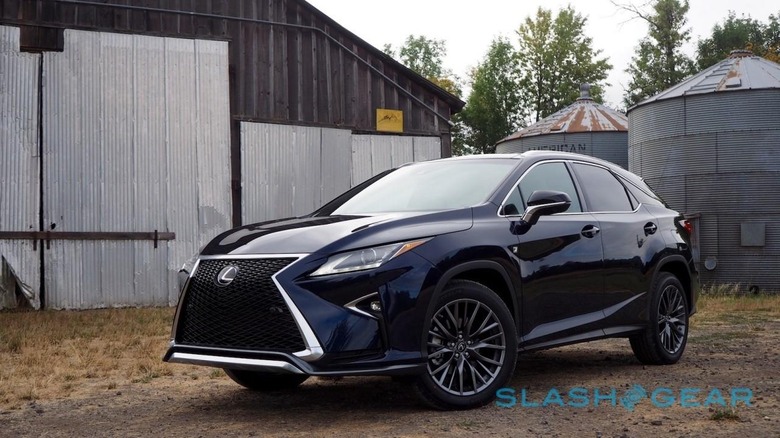
I also had a chance to drive the F SPORT versions of both RX. If you've not been keeping up, the badge is Lexus' take on BMW's M and Audi's S cars. Not quite so aggressively sporty, mind, and with no extra power, but you do get visual changes like those 20-inch wheels on the outside, new trim inside, and special SPORT S and SPORT S+ modes for suspension, throttle response, and transmission patterns.
The result is a tauter car – not to mention a better looking one – though I'm not sure either RX actually needs it when it comes to driving dynamics. In the RX350 F SPORT, switching to SPORT S+ mode left the car feeling needlessly firm, not to mention more reluctant to shift up through the gears even when cruising. F SPORT cars do get paddle-shifters, mind, so you can nudge the gears up manually if you prefer.
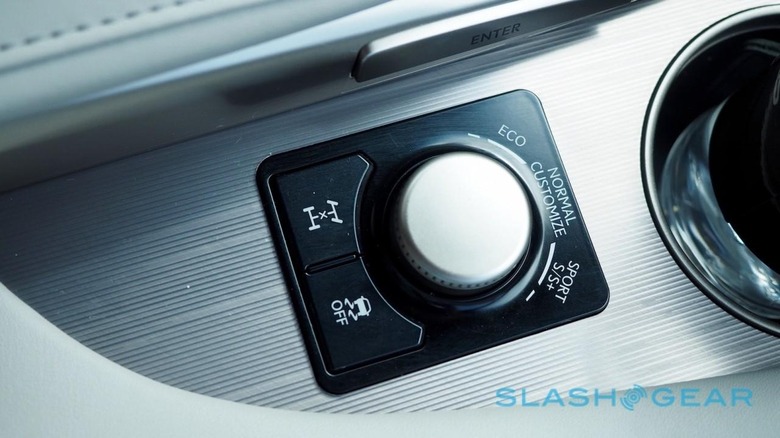
The RX450h F SPORT proved more successful – SPORT S is a good compromise between trying to make an SUV something it's not, and coaxing a little extra driving enjoyment from it – but even there I suspect the value is in the body kit rather than the performance tweaks.
Inside, there's space for five with 1-inch more front legroom and 1.2-inches more rear legroom; head and hip space have increased, too. The dashboard feels less busy compared to the outgoing RX, helped by the gearshift being moved down onto the center tunnel. There are plenty of storage spots and cubbies, though the points Lexus gains for putting a tablet-pocket on the side of the center console are then lost for making the phone nook too small for an iPhone 6 or similar.
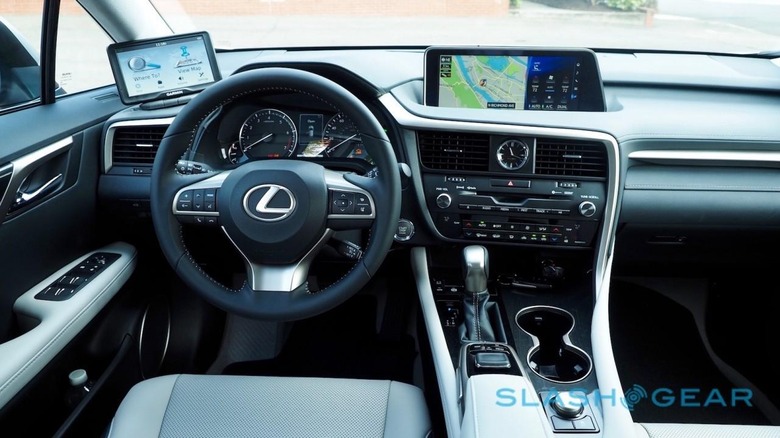
You notice two things instantly. First is the step up in quality, the plastics feeling more sturdy, while Lexus has used special wood inserts in some cars that have laser-etched metal strips running through them. They look a little like the deck of a luxury speedboat, which is no bad thing.
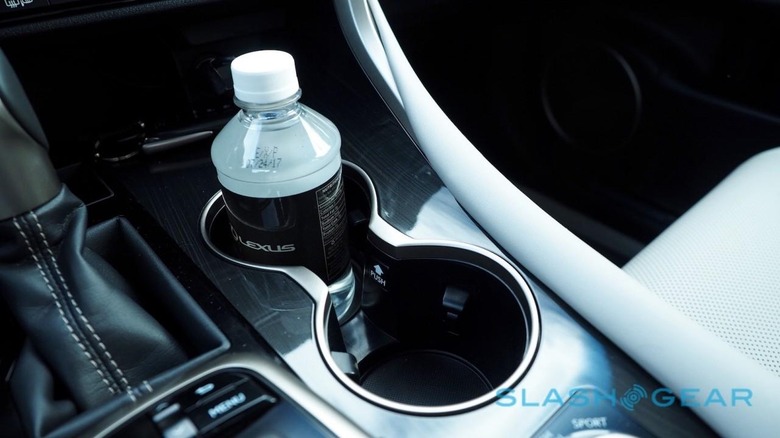
All the same, I can't help but wish there was a little less metal-effect plastic and more actual metal. Certainly, just about everywhere your fingers fall you meet soft-touch materials, and the leather seats are supple and supportive – I particularly like the extra bolstering in the F SPORT – but it'd be nice if the shiny stuff was legit brushed aluminum.
The second thing you notice is the huge display that now graces the top of the RX's dashboard. At 12.3-inches it's one of the largest car displays around, with room for a vast app or, more usefully, splitting up and keeping navigation, multimedia, and more all showing at the same time.
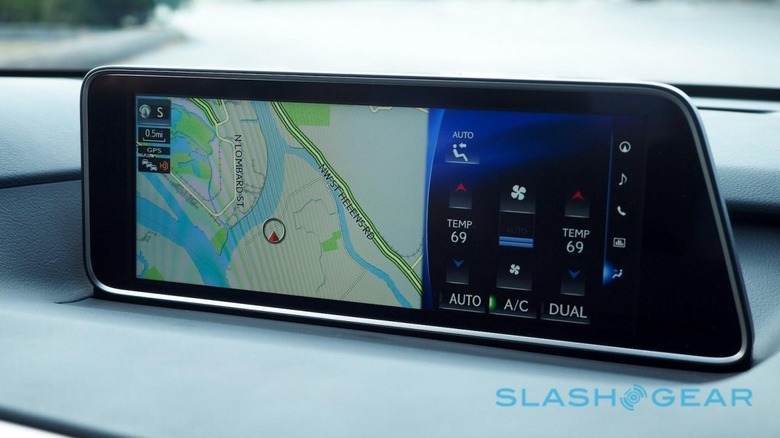
Unfortunately it's not standard across the range; the standard-fit panel is 8-inches, which looks undersized in the broad housing. Navigation is an option too, and as well as whether you get instructions barked at you, decides how you'll be interacting with the infotainment in general.
Non-nav cars get a scroll-wheel that clicks in to select. Those with the nav package, however, get a joystick-style selector, complete with enter keys on either side for easy squeezing.
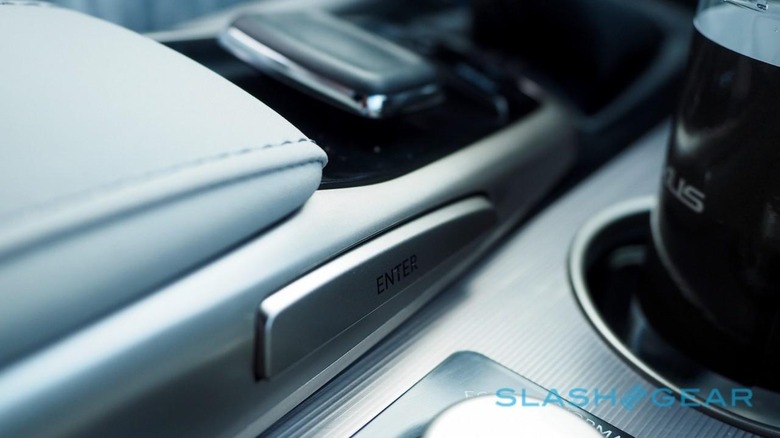
I'm not entirely sure why Lexus opted not to put the trackpad of the NX into the RX. Unfortunately, the joystick can be just as frustrating as always, and there were times I wished I could just reach out and tap the screen instead.
As for the software, it's a mildly buffed version of Lexus' existing platform, for better or for worse. No CarPlay or Android Auto – and, with Toyota showing no signs of getting onboard with either, I wouldn't hold my breath for them – though various levels of Entune with smartphone connectivity, periodic vehicle health reports, and the option to alert your local dealership when repairs need to be scheduled are available for subscription.
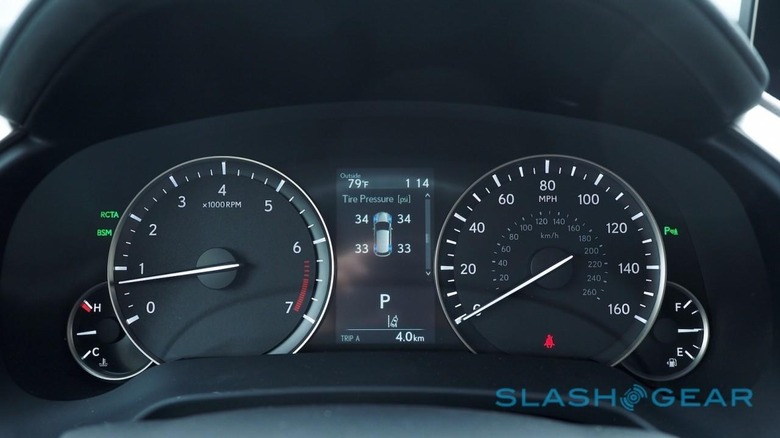
The driver binnacle, meanwhile, gets a 4-inch display – sandwiched in-between the gages in the regular cars, or off to the left in the F SPORT models – which, though delivering the necessities, feels on the small side given the expansive panels I've seen in some other recent cars.
All the same, you get a decent level of kit as standard. Dual-zone climate control, a 9-speaker audio system (with a choice of 12- or 15-speaker upgrades, the latter blasting out 835W courtesy of Mark Levinson), and a power tailgate with a button that, double tapped, not only closes the hatch but subsequently locks the whole car. Buttons to drop the power 60/40-split rear seats are also duplicated for the trunk.
[gallerybanner p=402416]
Then there are the geekier features. The RX gets an optional head-up display, the color HUD showing various levels of information like speed and upcoming navigation instructions. Does the driver's cupholder need adjustable depth to accommodate longer bottles? Perhaps not, but Lexus has fitted one anyway.
A sensor built into the rear Lexus badge can automatically trigger the tailgate if you hold your hand near for a few seconds – useful if you're carrying something – while the Climate Concierge can collectively control the A/C and the heated/cooled seats to maintain a certain temperature.
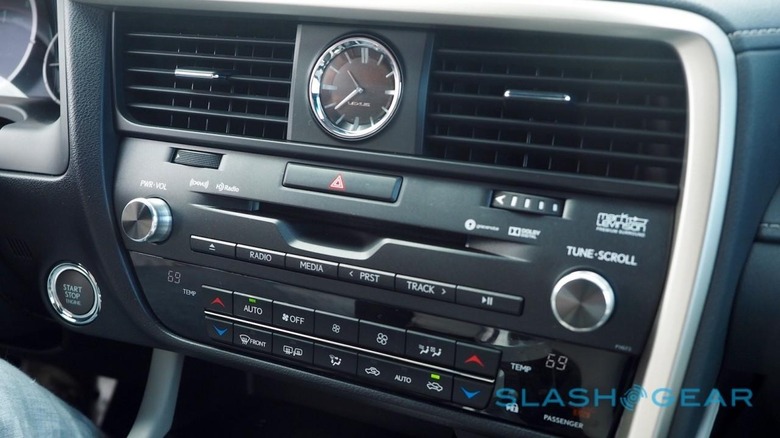
Meanwhile there's also optional adaptive cruise control – which can now bring you to a full halt and then, after you tap the stalk or the accelerator, start you up again – along with lane-keep assist, though I found the latter was fairly fussy about which road markings it would spot.
Blind-spot monitoring is one of those things I think should be standard-fit on a large car like an SUV, though sadly it's still optional on the 2016 RX. However, Lexus does have a fantastic birds-eye view for low speed maneuvers, which makes squeezing into awkward spaces far more straightforward.
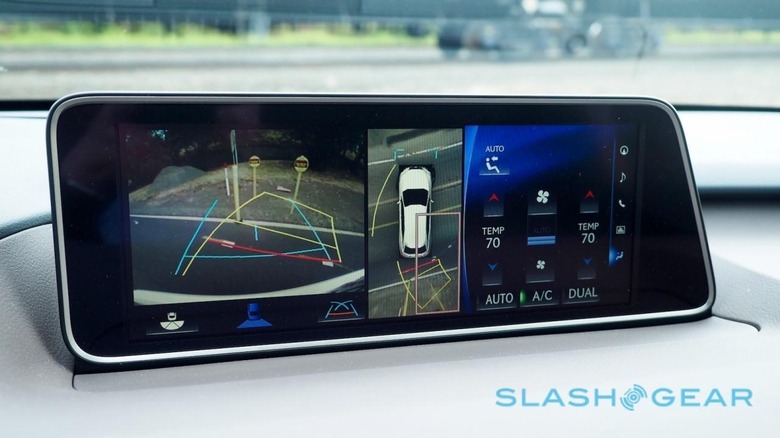
Lexus is yet to confirm final pricing for the new RX, saying only that it's expected to kick off at "well under" $45,000 when it hits dealerships this November.
It's hard to imagine the existing Lexus faithful not falling for this new luxury SUV. The equipment list is high, the performance reassuring – even if you have to opt for the hybrid to get a little vigor on the road – and the experience inside as cosseting as you'd expect. In fact, only the design may prove divisive, depending on how conservative Lexus fans actually are.
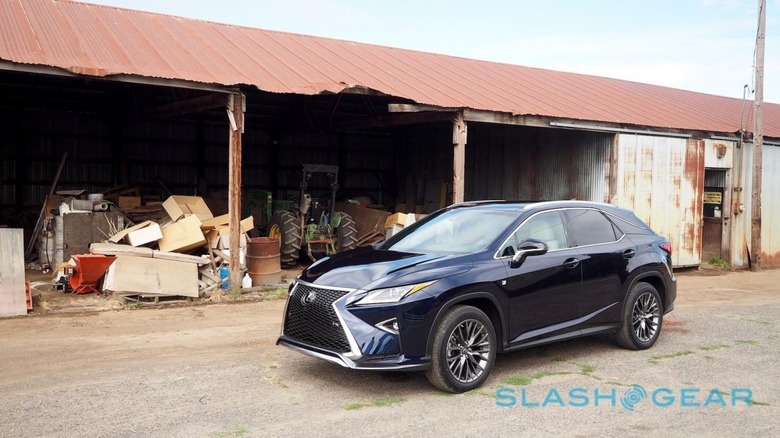
As I've said about previous cars from the company, though, I'd rather see the designers take a risk than play it safe. It finally feels as though the RX has some personality, along with the reassuring quality and reliability Lexus has become known for. "Safe" may have been the easier route, but the 2016 RX didn't succumb, and is all the better for it.

